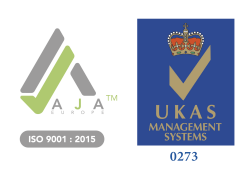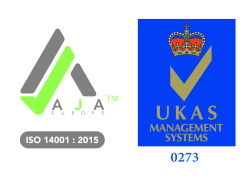Working with DSE (Display Screen Equipment)
Working with Display Screen Equipment
Are you sitting comfortably? 
It’s one of the commonest kinds of work equipment, but working with DSE can be a headache, literally. Here’s what you need to know as an employer to ensure compliance and improve the health of your employees…
As an employer, you must protect your workers from the health risks of working with display screen equipment (defined by the Health and Safety Display (Display Screen Equipment) Regulations 1992 as any alphanumeric or graphic display screen). Types of DSE are PCs, laptops, tablets and smartphones. Health problems associated with working with DSE include back pain, upper limb problems, fatigue and eye strain. These problems can occur due to over use of DSE or poorly designed workstations or work environments. The causes may not always be obvious and can be due to a combination of factors.
Digital Eye Strain
As computers have become more commonplace, so too has Digital Eye Strain (DES) or computer vision syndrome. You only have to spend two hours looking at a computer screen, mobile, tablet to cause digital eye strain. It’s estimated that 50% or more of digital device users may suffer from symptoms which include blurred vision; dry eyes; redness or irritation; headaches.
DSE is one of the most common kinds of work equipment, so just by taking a few simple precautions there is the potential to make work more comfortable and productive for a very large number of people.
Hot-desking
“Hot-desking” is now a common feature in many offices. A work station available to any member of a mobile team or work group.
Shared desk. A work station shared by two or more individuals by agreement.
The principle is that workstations are used to their maximum potential, particularly where an organisation has employees who are often away from the office, thereby leaving workstations empty for considerable periods of time.
There can be a number of health and safety issues related to the introduction of a hot-desking system. These may include:
Employees failing to complete a workstation analysis and not setting up the workstation for their particular needs.
Workstations should be adapted for the height and reach of individual workers. Neglecting this increases the risk of RSI as well as back and lower limb problems.
As an employer following a number of simple steps will ensure compliance with the relevant legislation and HSE guidance and reduce the number of sick days at your company and improve the overall health of your workforce.
DSE Risk Assessment: 7 Simple steps to protect staff from the risks of DSE
· 1. Get comfortable.
Forearms should be approximately horizontal and the user’s eyes should be the same height as the top of the screen.
· 2. Avoid glare.
Arrange the desk and screen to avoid glare, or bright reflections. This is easiest if the screen is not directly facing windows or bright lights.
· 3. Have plenty of leg room.
Make sure there is space under the desk to move legs.
· 4. Take a break.
According to the HSE organised or scheduled rest breaks can be a solution. As the employer you need to plan changes in activity so workers can reduce the health risks of prolonged use of DSE. Timing and length of changes in activity or breaks for DSE use isn’t stipulated by the legislation. However, the HSE advises that frequent short breaks are better than infrequent longer ones. 5-10 minutes every hour is better than 20 minutes every two hours.
· 5. Adjust your screen.
The characters on the screen should be sharp, in focus and not flicker or move. Adjust the brightness and contrast controls on the screen to suit the room’s lighting conditions.
· 6. Choose your keyboard wisely.
It’s of vital importance to set up your keyboard correctly. A space in front of the keyboard can help you rests your hands and wrists when not typing. Good keyboard technique is vital – keeping a soft touch on the keys and not overstretching the fingers will help.
7. Take an eye test.
The Display Screen Regulations 1992 state that workers are entitled to an appropriate eyesight test if they request one. Corrective lenses should be provided if necessary, at no cost to the employee.
Portable computers
Consider the risks of manual handling if workers have to carry heavy equipment.
DSE user training
You must provide information and health and safety training to DSE users to help them identify risks and safe working practices.
ETD Training are based in Shropshire but our online training portal is accessible to users everywhere - all you need is an internet connection. Browse our courses here.







